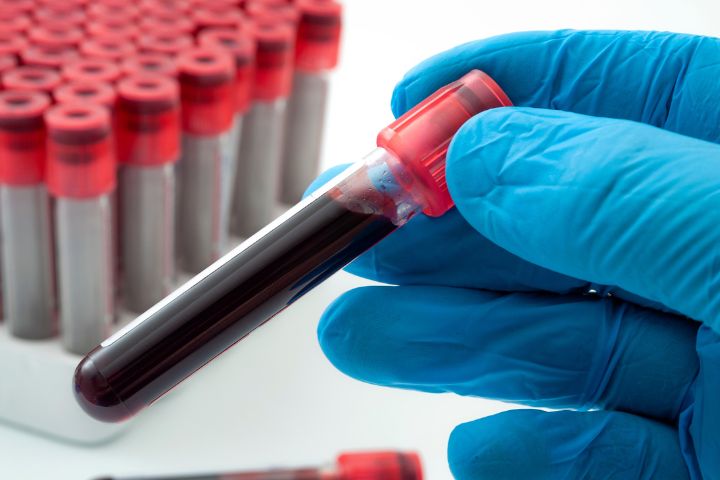Northeast Medical Institute - New Haven Campus Phlebotomy Course & Cna Class for Dummies
Northeast Medical Institute - New Haven Campus Phlebotomy Course & Cna Class for Dummies
Blog Article
A Biased View of Northeast Medical Institute - New Haven Campus Phlebotomy Course & Cna Class
Table of ContentsNortheast Medical Institute - New Haven Campus Phlebotomy Course & Cna Class - The FactsSome Ideas on Northeast Medical Institute - New Haven Campus Phlebotomy Course & Cna Class You Should Know10 Easy Facts About Northeast Medical Institute - New Haven Campus Phlebotomy Course & Cna Class ExplainedNortheast Medical Institute - New Haven Campus Phlebotomy Course & Cna Class Fundamentals ExplainedThe Best Guide To Northeast Medical Institute - New Haven Campus Phlebotomy Course & Cna ClassThe Ultimate Guide To Northeast Medical Institute - New Haven Campus Phlebotomy Course & Cna Class
The use of such gadgets need to be gone along with by various other infection avoidance and control techniques, and training in their usage.For settings with reduced resources, expense is a driving consider procurement of safety-engineered devices - PCT Courses. Where safety-engineered gadgets are not available, experienced use a needle and syringe serves. Unexpected direct exposure and particular information regarding an incident must be taped in a register. Support solutions must be advertised for those that undertake unexpected direct exposure.
One of the important markers of high quality of treatment in phlebotomy is the participation and cooperation of the individual; this is mutually helpful to both the wellness employee and the person. Clear information either written or verbal should be readily available to every individual who goes through phlebotomy. Annex F offers example text for discussing the blood-sampling procedure to a client. In the blood-sampling room for an outpatient division or clinic, provide a comfy reclining couch with an arm rest.
Northeast Medical Institute - New Haven Campus Phlebotomy Course & Cna Class Can Be Fun For Everyone
Make certain that the signs for blood sampling are plainly defined, either in a created protocol or in documented instructions (e.g. in a lab kind). Gather all the tools required for the procedure and area it within risk-free and easy reach on a tray or trolley, ensuring that all the items are plainly visible.
Where the person is adult and conscious, follow the steps laid out below. Present yourself to the individual, and ask the client to state their complete name. Examine that the laboratory form matches the patient's identity (i.e. match the person's information with the lab type, to guarantee precise identification). Ask whether the patent has allergies, fears or has ever passed out throughout previous injections or blood attracts.
Make the person comfortable in a supine placement (when possible). Location a clean paper or towel under the client's arm. Review the examination to be performed (see Annex F) and obtain spoken authorization. The client has a right to reject an examination at any moment before the blood sampling, so it is essential to make sure that the patient has actually understood the treatment.
Northeast Medical Institute - New Haven Campus Phlebotomy Course & Cna Class - Truths
Expand the individual's arm and examine the antecubital fossa or forearm. Locate a capillary of a good size that is noticeable, straight and clear. The representation in Area 2.3, shows usual settings of the vessels, however lots of variations are possible. The typical cubital capillary exists in between muscular tissues and is normally one of the most simple to puncture.
DO NOT place the needle where blood vessels are diverting, because this boosts the chance of a haematoma. Situating the capillary will aid in establishing the proper dimension of needle.
Specimens from main lines lug a risk of contamination or incorrect lab test results. It is acceptable, yet not perfect, to attract blood specimens when very first introducing an in-dwelling venous gadget, prior to attaching the cannula to the intravenous liquids.
Not known Incorrect Statements About Northeast Medical Institute - New Haven Campus Phlebotomy Course & Cna Class
Failing to permit enough contact time enhances the threat of contamination. DO NOT touch the cleaned website; in specific, DO NOT position a finger over the capillary to lead the shaft of the revealed needle.
Ask the individual to create a fist so the veins are more famous. Enter the blood vessel promptly at a 30 level angle or less, and continue to introduce the needle along the vein at the easiest angle of entrance - CNA Training. Once enough blood has actually been accumulated, release the tourniquet BEFORE withdrawing the needle
3 Simple Techniques For Northeast Medical Institute - New Haven Campus Phlebotomy Course & Cna Class
Take out the needle gently and apply mild stress to the website with a clean gauze or completely dry cotton-wool round. Ask the individual to hold the gauze or cotton woollen in area, with the arm extended and increased. Ask the individual NOT to flex the arm, due to the fact that doing so triggers a haematoma.

Northeast Medical Institute - New Haven Campus Phlebotomy Course & Cna Class Fundamentals Explained
Do not push the syringe plunger since extra pressure increases the danger of haemolysis. Where possible, keep televisions in a shelf and relocate the shelf in the direction of you. Infuse downwards into the suitable coloured stopper. DO NOT eliminate the stopper because it will launch the vacuum cleaner. If the sample tube does not have a rubber stopper, inject exceptionally slowly right into the tube as minimizing the pressure and velocity used to move the specimen reduces the risk of haemolysis.

Report this page